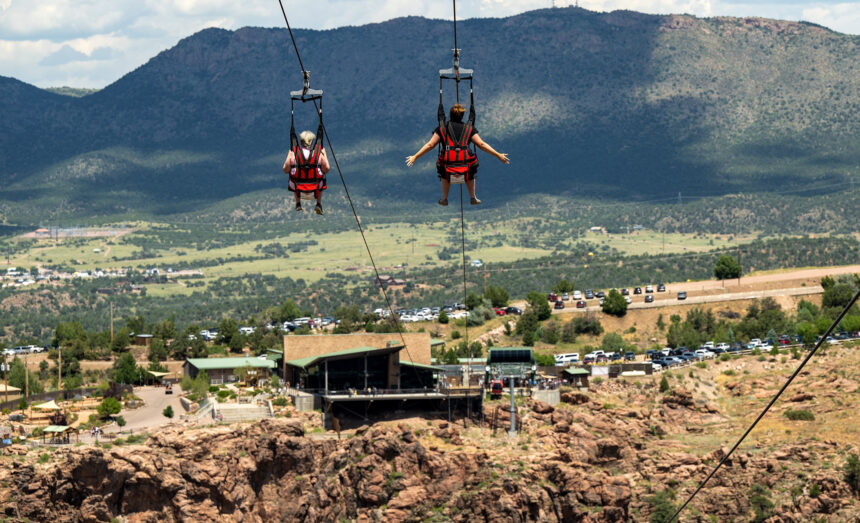Cañon City Transforms Its Image Through the Arkansas River
In exploring the significance of the Arkansas River, reporters journeyed from the river’s source near Leadville to its border with Kansas, uncovering diverse perspectives from the communities it traverses. This exploration underscores the transformation occurring in Cañon City, where the river is rewriting the narrative of a town often dismissed as a “prison town.”
Embracing Adventure in Cañon City
At a serene park along the Arkansas River, Corinne O’Hara reflects on her family’s decision to leave Summit County for Cañon City. What they found was far from the gritty image often associated with the region. O’Hara describes her move in 2019, alongside her husband John and their two teenagers, as a “gift.”
“Before I moved here, Cañon City wasn’t even on my radar,” O’Hara remarked. “But it offers as much as other mountain towns.” The family enjoys scenic trails and easy access to the river, which flows through Cañon City, providing the longest urban stretch of water in Colorado.
Centennial Park, a revitalized space near downtown, exemplifies this transformation. It features a lifejacket loaner station and facilities for swimming and kayaking, demonstrating community efforts to enhance local outdoor activities, leading to the successful Royal Gorge Whitewater Festival held annually.
Journey Towards Outdoor Engagement
Cañon City’s journey from a farming and industrial hub to an outdoor recreation hotspot has been remarkable. Environmental remediation, starting in the 1990s, has dramatically improved water quality, spurring interest among boaters and anglers.
Local paddler Chris Moffet recalls the river’s past hazards, with disused debris making it less inviting. “You’d get poked with rebar while tubing,” he noted, describing the efforts, with help from community groups, to create safer recreational spaces.
Trail Development and Community Support
In 2010, the Whitewater and Kayak Recreation Park emerged as a key project, creating favorable conditions for both local residents and tourists. The recent expansion of trail networks has played a vital role in this transformation by enhancing access to outdoor activities and strengthening community ties.
“Visitors can now explore over 50 miles of trails,” said local public wellness coordinator Brian VanIwarden, highlighting the collaboration between various organizations and agencies that have supported this growth. The parks and trails now serve as a symbol of hope and revitalization, engaging both locals and visitors.
Table: Development and Impact of Cañon City Trails and River Attractions
| Project | Investment | Impact |
|---|---|---|
| Whitewater Park | $400,000 | Increased recreational activities |
| Trail Networks | $250,000 | Enhanced access for hikers and bikers |
| Citywide Development | $3.5 million | 300 jobs created |
Looking Ahead
While progress is evident, challenges remain. The separation caused by U.S. 50 hinders access from downtown to the river, and dilapidated properties nearby continue to obstruct redevelopment efforts. The community’s vision to position the Arkansas River at the center of Cañon City’s identity remains a work in progress, as leaders strive for a harmonious blend of commerce and recreation.
As initiatives continue to forge connections between the river and the city, Cañon City’s effort to shed its outdated reputation appears promising. “It’s all about collaboration,” said VanIwarden, calling attention to the community spirit that has fueled this transformation.




